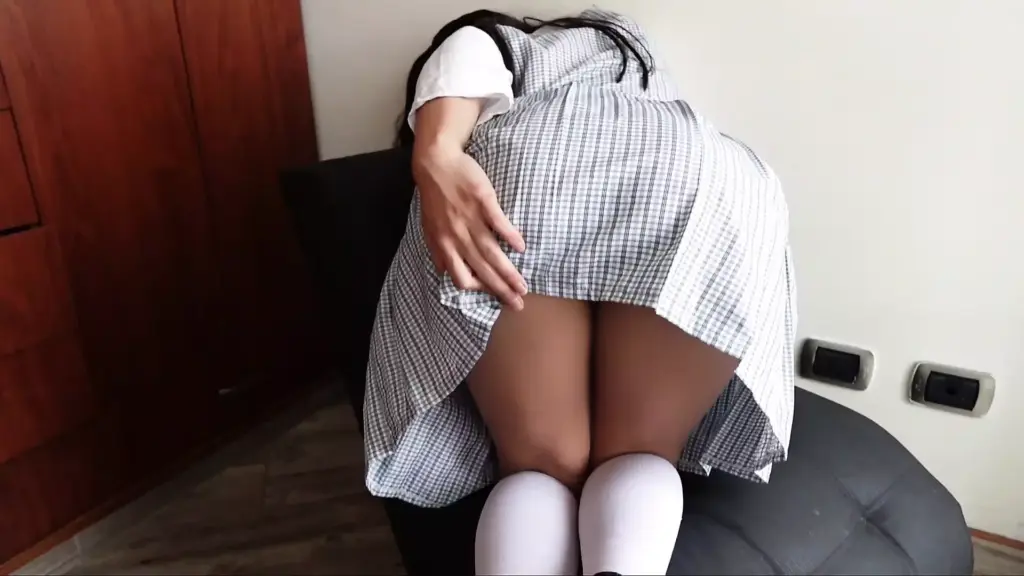Uniforms, Not Costumes: Why Authority Aesthetics Keep Owning Screens

Let’s skip the goofy hot takes and talk straight: “uniform porn” isn’t just cosplay with extra buttons. It’s about signals – competence, duty, clean lines, the whole “I’ve-got-this” posture – and how those signals change the air in a room before a single word lands. The better shoots lean into that vibe and keep it grown: clear framing, visible consent, no panic edits. If you want the curated, no-snipe-hunt version of that lane, the shelf at ModPorn Uniform gets the brief: camera that listens, wardrobe that has verbs (not noise), and pacing that lets choice read like choice.
Why it sticks isn’t rocket science. Even with minimal set dressing, a tidy uniform can flip brains into “story mode,” like you just walked into a scene that started fifteen minutes ago and only now let you watch. When the performance treats that tension with some respect – slower eye lines, tiny beats where hands hesitate then decide – the rewatch impulse kicks in, deep, raw pleasure. Not because it’s louder than everything else, but because it’s surer of itself. That sure-footed feeling is the product.
Baselines so we’re all aligned: adult performers only; explicit “school-coded” stuff is a hard no; consent should be visible in-frame, not stapled on in a disclaimer. Uniform ≠ license to be sloppy with boundaries. Honestly, the style works because of boundaries – the clean edges make space for heat to exist without chaos.
What a Uniform Actually Says (and What It Doesn’t)
The uniform trick, when done right, is half psychology and half editing. A well-cut jacket or lab coat reads competency and focus. A service shirt with a name tag reads helpful, familiar, “we’ve met before.” Military-inspired shapes read order and stakes. None of this needs shouting. It needs camera logic that knows how to translate signals into feelings.
Three signals that land, reliably:
- Order → Trust: If the fit is intentional and the posture calm, the room relaxes. Viewers believe what they can track – that’s the entry ticket for anything spicier.
- Access → Intimacy: Lanyards, keycards, clipped pens – micro-props that imply you’re inside a system. Access reads as a private world, which reads intimate.
- Change → Choice: When a collar loosens or a cap comes off, the moment scans as a decision, not a default. Decisions are sexy. Defaults aren’t.
And a quick kill-list:
- Noise for noise’s sake. Too many badges, clanky gear, squeaky fabrics – it steals the mic from the human. Pick one hero item and let hands do the talking.
- Over-lighting. Fluoro wash flattens faces and turns uniforms into Halloween plastic. Big soft key off-axis, tiny rim for edge, negative fill for shape. Done.
- Boundary blur. Anything that reads underage, coerced, or “wink-wink student” is not just bad optics, it’s out of bounds. Keep the lane adult or don’t drive here.
If you want a quick mainstream primer on how “uniforms and specific clothing” even sit inside the bigger kink/fetish map (no scare tactics, plain-English definitions), this Healthline explainer covers it without drama: Kink vs. Fetish – what’s the difference?. It’s helpful when you’re trying to explain to a normie friend why a lab coat or flight jacket can be a mood all by itself.
The Playbook: Light, Wardrobe, Pacing, Proof
Newsroom version: show the room, show the choice, hold the consequence. That’s it. Everything else is garnish. But uniform shoots get a little bonus – fabric has built-in verbs. If you plan those verbs, your edit will basically write itself.
Light like a portrait, not a storefront. Uniforms are contrast machines. Give them a soft key at around chin height, off-axis 30–45°, and let a smaller back edge carve the shoulder line. Kill overheads unless they’re pulling a specific trick (like a strip of top light on a glossy brim). For deeper skin, protect your shadows – don’t crush what makes the frame feel alive. For pale skin, warm the key a touch so faces don’t go chalky against white walls. You’re sculpting, not blasting.
Wardrobe with verbs, not lore. You don’t need a museum exhibit. You need one piece that can do something on camera. Collar loosens. Strap unhooks. Belt clicks. Hat tilts. Sleeve rolls. If it can’t move, it’s just set dressing. And ditch noisy fabrics; the mic will rat you out. Leather can work if you keep specular highlights intentional; vinyl needs finesse or it reads grease fire. Cotton and denim play nicest with skin tones and natural light.
Hands are the subtitles. Uniform lanes live and die on hands. A pause at a button says, “we’re about to choose.” Gloved fingers removed with a clean peel says, “we’re shifting modes.” Hands lingering on a name tape or epaulet says, “this means something.” Don’t cut away right when the message starts. Hold through the action and give the frame two heartbeat beats after. The breath tail is the glue.
Angles that explain, not confuse. Start wide enough to show geography – hallway, office, hangar, clinic – then move to a medium where the eyes and hands can talk at the same time. Save your close for the reveal or the yes. Eye-height beats ceiling-cam nine nights out of ten. Tripod calm reads confident; a jittery hand reads “we’re hiding the story.”
Cut on meaning. It’s journalism rules smuggled into entertainment. Chop the filler, hold the choice, leave the aftermath. Editors who keep one second of aftercare – water, laugh, “we did that” – get more replays than editors who smash-cut at peak. Memory loves a period, not ellipses.
Sound is your adult card. If the music never ducks, nothing feels private. Give the room ten seconds. Let the breath and a small “okay” carry. That’s the receipt that this was a moment, not a montage. Then bring the score back if you must. The best clips breathe.
Three setups that just… work (steal and tailor):
- Clinic-Clean: lab coat, clipboard, teal accent light, soft key; audible pen tap before the collar loosens; button is a still frame + exhale.
- Flight-Deck Tease: bomber jacket, headset as prop, warm key + cool rim; hat off becomes the decision beat; land on a held grin to lens.
- Service Shift: name tag, apron, receipts in pocket; door actually opens on camera; hands roll sleeves as the tempo rises; last shot is palm flat to chest, then a laugh.
For home creators (cheap kit, pro-enough look): phone on tripod at eye height, 24–32″ softbox (or shaded lamp bounce) ~45° off, a tiny practical in back for separation, floor tape for marks so turns don’t clip frame, matte lotion to kill hotspots, and water. Do one “quiet pass” take every shoot – no music, minimal direction. It will save your edit when things feel too busy.
Labels that actually help users: “denim-daylight,” “clinic-clean,” “hangar-warm,” “laugh-first,” “aftercare-on-camera,” “eye-height-only.” Buzzwords are vibes; lanes are maps. Give people a map and they’ll stay longer.
Culture & Business: Why the Lane Converts (Without Yelling)
There’s a reason uniform content keeps popping on charts even when the rest of the feed is neon and noise. It solves a few real problems at once:
- Clarity: The premise is pre-baked; you waste zero time explaining who’s who.
- Budget: One hero garment beats five art-department dead ends. Less stuff, more signal.
- Trust: Viewers believe what they can track. Uniforms telegraph structure; structure telegraphs safety.
Also, it travels. Both the U.S. “service-everything” vibe and Europe’s clinic-clean cool sit comfortably under the same umbrella. You can shoot a shabby-chic flat in Camden or a sun-blasted garage in Tucson and, if the beats are visible, the same audience shows up. The signal is universal: “order, then choice.”
On the less-sexy side, policy and payments still matter. Adult platforms are constantly juggling rules about age checks and previews, and uniform content is extra on-the-nose about “adult world” contexts (med, military, police, airline). Keep it fictionalized enough to dodge trademark headaches; keep it adult in the obvious ways. If your final cut can be described in one sentence to a stranger without squirming, you’re probably fine.
Representation note (not a press release, just retention math): uniforms look different across bodies and cultures. A fitted blazer on a thick body reads different than on a lean one; both can be killer on camera if the lens stays honest. Include deeper skin with warm keys, ink/no-ink, trans and non-binary performers, mobility aids when present. The more your catalog looks like the real world, the more nights a real-world audience will spend with you.
Viewer playbook to dodge scroll fatigue: build a three-piece set like a weekend feature package – short opener (clinic-clean, mic on breath), feature middle (hangar-warm, hands do verbs), soft closer (apartment-neutral, edits slow, aftercare visible). Three moods, one arc. People remember arcs.
Myths vs. facts, lightning quick:
- Myth: Uniform equals kink-only. Fact: It’s an aesthetic that boosts clarity; can be tender, silly, or bold depending on pacing.
- Myth: You need a full costume truck. Fact: One hero piece with a verb outperforms prop salad.
- Myth: Blast light so the outfit pops. Fact: Side key + rim + breath on the mix. Faces run the room.
- Myth: More angles, more story. Fact: Fewer angles, better beats. Cut on meaning.
Final read, plain-spoken: the uniform lane wins because it keeps the adult part… adult. The story is legible. Consent is visible. The wardrobe helps instead of hiding the person. And when the moment finally chooses itself – collar undone, sleeve rolled, cap set down – you feel it. That’s not nostalgia, and it’s not cosplay with extra steps. It’s craft. If you want the fast lane that respects that craft without turning the browse into a maze, you already know the sign on the aisle – start where the curation actually matches the promise.

